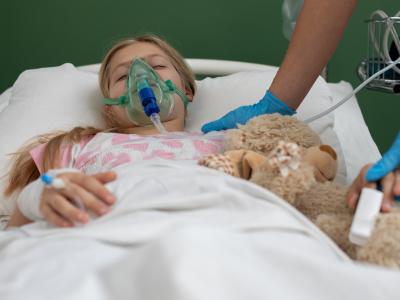Study: Pre-surgical antibiotic prescriptions often inappropriate
A new study that surveyed 22.5% of Australia's hospitals from January 2016 through June 2018 found that surgical antimicrobial prophylaxis (SAP) was often inappropriate, because of both incorrect timing and overly long treatment. The study appears in JAMA Network Open.
A total of 15,395 prescriptions (10,740 procedural and 4,655 postprocedural) were audited for appropriateness by pharmacists, nurses, and infectious disease physicians who were trained in study methodology. They found that only 48.7% of all total prescriptions were appropriate. Appropriateness varied among types of surgeries: Only 33.7% (95% confidence interval [CI], 26.3%-41.2%) of dentoalveolar surgical SAP prescriptions were appropriate, while 68.9% of neurosurgey prescriptions were appropriate.
"The adjusted appropriateness of postprocedural prescriptions was also low, ranging from 21.5% (95% CI, 13.4%-29.7%) for breast surgery to 58.7% (95% CI, 47.9%-69.4%) for ophthalmological procedures. The most common reason for inappropriate procedural SAP was incorrect timing (44.9%), while duration greater than 24 hours was the most common reason for inappropriate postprocedural SAP (54.3%)," the authors wrote.
Among procedural prescriptions, 11.7% were prescribed when procedural SAP was not deemed to be required, the authors said.
In a commentary on the study, two researchers said the study was well-designed, but ultimately the audits were too time-consuming. Instead they suggested conducting smaller-scale audits more frequently, and using antibiotic consumption data to assess SAP.
Nov 8 JAMA Netw Open study
Nov 8 JAMA Netw Open commentary
Highly deadly Klebsiella pneumoniae strain identified in Brazilian hospital
A retrospective analysis of adult bloodstream infections involving carbapenemase-producing Klebsiella pneumoniae (KPC-KP) at a Brazilian teaching hospital identified an emerging strain linked to high mortality rates. A team from Brazil and Cardiff University in the United Kingdom reported its findings today in Clinical Infectious Diseases.
For the study, the researchers looked at cases from January 2014 to December 2016 to assess the molecular epidemiology and impact on 30-day all-cause mortality. Of 165 KPC-KP cases, the endemic CC258 group was predominant (66%), followed by ST16 (12%). Though the overall 30-day mortality rate was 60%, it was much higher for ST16, for which 95% of the cases were fatal.
The team found no differences in patient severity scores and baseline clinical variables, but they did find that risk factors for fatal outcomes were presence of ST16 and septic shock.
Further investigation found that the ST16 clone carried up to 14 resistance genes and was highly pathogenic in moth larvae. "Our results suggest that even in endemic settings, highly virulent clones can rapidly emerge demanding constant monitoring," they wrote.
Nov 12 Clin Infect Dis abstract
Review: FDA guidance often touts indirect end points for antimicrobial trials
A systematic review today of 27 US Food and Drug Administration (FDA) guidance documents on developing new anti-infective agents has determined that the documents frequently recommend as study end points indirect measures of patient benefit—rather than direct measures, such as symptom resolution or survival—raising questions about whether the FDA is following its own standards when it comes to new antimicrobial drugs such as antibiotics.
For the study, published in JAMA Internal Medicine, Harvard University scientists included 22 guidance in their review. The documents included recommendations for primary end points in 27 "pivotal" clinical trials for drugs designed to combat infectious diseases. An end point is an event or outcome that can be objectively measured to see if the drug benefits patients.
The investigators found that 21 of 27 indications recommended surrogate—or indirect—outcomes as either the sole primary end point or as one or more components. What's more, none of the recommendations for the use of surrogate end points matched the regulatory and scientific conditions favoring indirect outcomes in place of clinical outcomes, the authors reported.
The authors conclude, "Existing guidance documents should be updated and revised to recommend appropriate clinical outcomes consistent with general scientific and regulatory parameters."
A related commentary in the same journal, however, notes that surrogate end points are not necessarily bad, such as with uncomplicated gonorrhea, for which the primary end point is microbiological cure. "This surrogate measure of microbiological cure meets none of the 3 criteria previously listed for surrogate trial end points," write the commentary authors, Paul Volberding, MD, and Henry Chambers, MD. "Nonetheless, both clinically and from a public health perspective, eradication of the organism is the important outcome."
The commentators, from the University of California San Francisco, add, "The true debate is not whether to use surrogate markers. Rather, the debate is about when surrogate markers are meaningful."
Nov 11 JAMA Intern Med systematic review
Nov 11 JAMA Intern Med commentary












